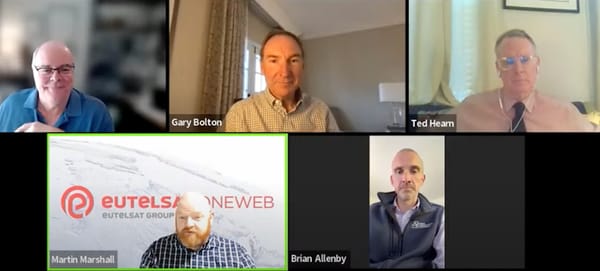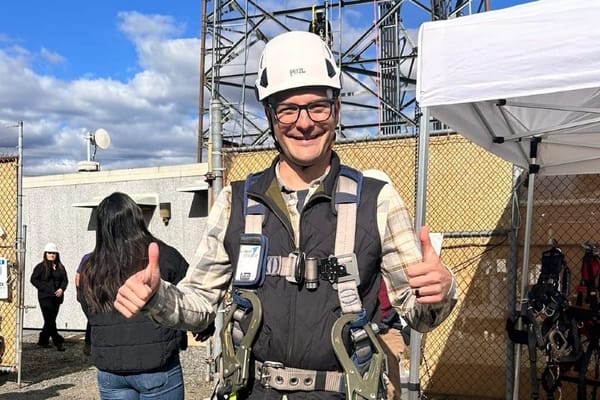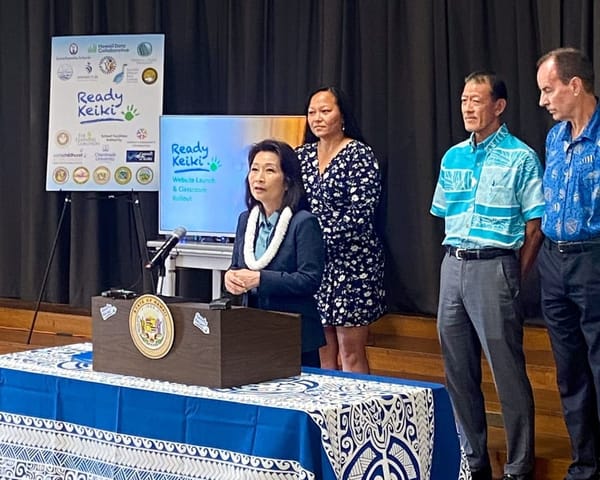Some States Confused about Changes to NTIA Model Challenge Process
The new guidelines specify that only subscribers of 100 * 20 Mbps service will have speed tests accepted.
Jake Neenan
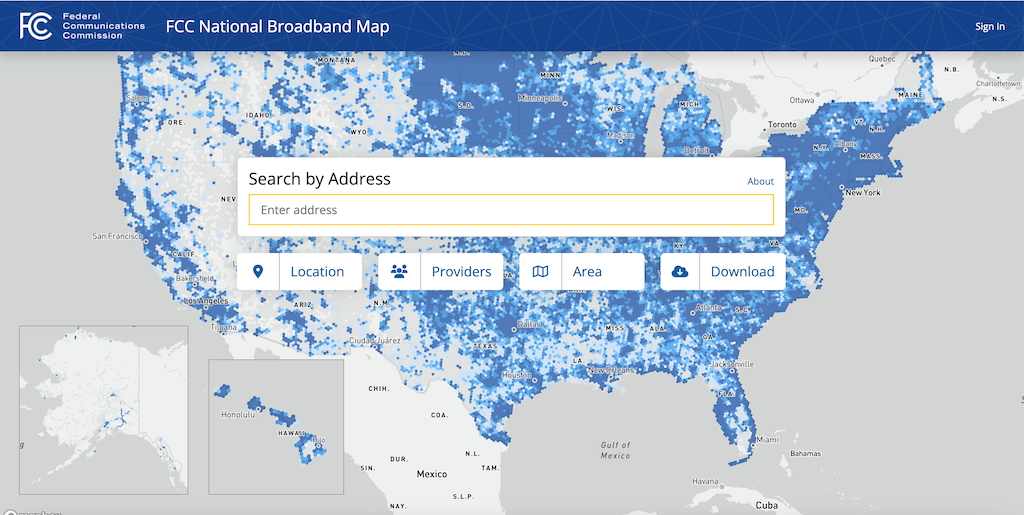
WASHINGTON, September 20, 2023 – The National Telecommunications and Information Association has changed the model challenge process for main broadband program to specify that the agency’s standard will only accept speed tests from locations with extremely high-capacity broadband.
The new guideline, which the NTIA characterizes as a clarification, means that only subscribers of service at 100 Megabits per second (Mbps) upstream and 20 Mbps downstream will have their speed tests accepted.
This specification means that all those considered “underserved” will not be eligible to challenge actual speed measurements with speed tests.
The agency’s model process under the Broadband Equity, Access and Deployment program was first released on June 28 as a template for states to accept and process challenges to their broadband map data ahead of allocating their portions of the $42.5 billion in BEAD funds.
Speed tests, conducted by subscribers while meeting certain methodological standards, show their actual internet speeds are one form of evidence states can accept in these challenges. The program considers areas with access to speeds in excess of 100 Mbps upload and 20 Mbps download – 100 * 20 Mbps – to have adequate broadband access and makes them ineligible for funding. Money is targeted at areas receiving speeds below 100 * 20 Mbps, called “underserved,” and areas receiving below 25 * 3 Mbps, called “unserved” areas.
Other ways to challenge reported coverage
There are other ways reported coverage can be challenged. The availability of reported coverage can be contested, for example, with evidence providers do not offer plans at the speed they are recorded as providing in government data.
The initial release of the model process included the sentence “If the household subscribes to a speed tier of between 25/3 Mbps and 100/20 Mbps and the speed test results in a speed below 25/3 Mbps, this broadband service will not be considered to determine the status of the location.”
In the updated version — changed on August 30, 2023, according to the NTIA’s change logs — does away with this, specifying “only speed tests of subscribers that subscribe to tiers at 100/20 Mbps and above are considered.”
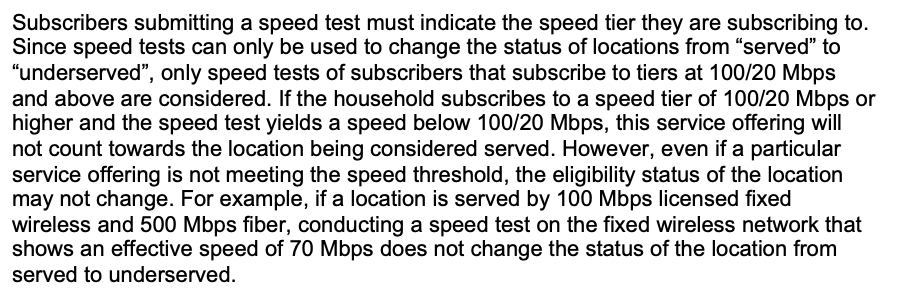
Screenshot of the updated model challenge process language.
That means, for example, speed tests from a subscribers to a 80 * 10 Mbps plan showing they receive speeds of 23 * 2 Mbps would not be accepted. Only tests from subscribers to 100 * 20 Mbps or faster showing lower speeds would count toward changing that location’s service designation.
The NTIA said this update does not constitute a change in policy, but was made to clarify an existing rule: only locations marked as served can challenge on the basis of speed.
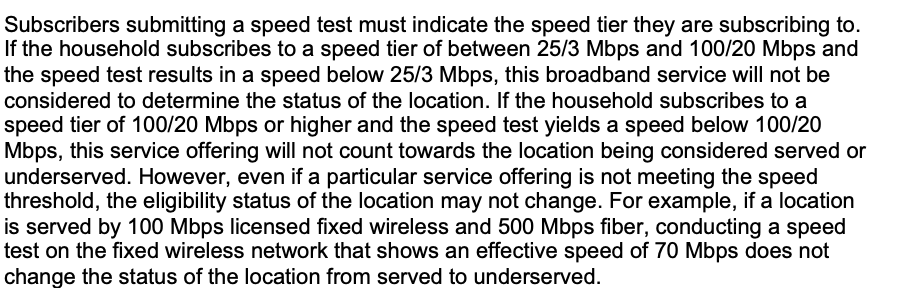
Screenshot of the original model process, stating speed tests from subscribers between 100*20 and 25*3 Mbps showing actual speeds below 25*3 could be used to disqualify the advertised coverage.
The new specification has caused confusion
This has caused confusion in some state broadband offices. Jessica Simmons, executive director of the Georgia Broadband Program said her office was under the impression that consumers who subscribe to an internet plan offering speeds in the underserved range could submit – through an allowed challenger like a nonprofit or state government office – speed tests showing that they receive speeds below the unserved threshold.
“Rather than clarification, it did seem like a policy shift to us,” she said. “We believed it seemed clear that an underserved location could be changed to unserved.”
States are required to submit their challenge processes in the first volume of their BEAD initial proposals – documents outlining implementation plans for the program – on December 27.
Georgia released volume one of its proposal on Tuesday. Simmons and her four-person team made sure to change the language in their proposal to reflect the new model process.
“If it’s coming from the NTIA, you know, we’ve got to get our plan approved,” she said.
In total, 14 states and Puerto Rico have released their volume one. They all base their challenge processes heavily on the NTIA’s model, with all but three adopting it in full. Vermont, Delaware, and Ohio made minor changes that do not relate to speed test processing.
Eight use the language around speed tests from the original model.





